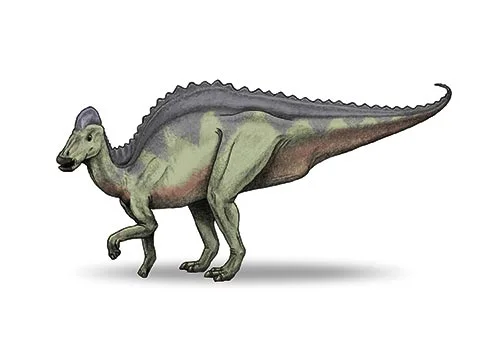Hypacrosaurus (near the highest lizard)

Hie-pak-roe-sore-us
Barnum Brown - 1923
Herbivore
Estimated 9 meters long
Euornithopod
H. altispinus (type), H. stebingeri
Canada - Alberta - Horseshoe Canyon Formation. USA - Montana - Two Medicine Formation
Late Cretaceous, 76-67 million years ago
Hypacrosaurus Facts
Hypacrosaurus was a genus of herbivorous dinosaur that lived during the Late Cretaceous period, approximately 76-67 million years ago. Its name, “near the highest lizard,” refers to the fact that it was named after the closely related genus Corythosaurus, which means “helmet lizard,” and was one of the largest members of the hadrosaur family, which also includes well-known dinosaurs such as Parasaurolophus and Edmontosaurus.
Hypacrosaurus was a large dinosaur, measuring up to 30 feet (9 meters) in length and weighing several tons. Like other hadrosaurs, it had a distinctive, duck-billed snout and a battery of hundreds of tightly packed teeth that it used to grind up tough vegetation. It also had a large, bony crest on its head that was hollow and likely used for vocalization, although the exact purpose of the crest is still a matter of debate among scientists.
Hypacrosaurus was one of the last and most derived members of the hadrosaur family, and it had a number of unique features that set it apart from its relatives. For example, its teeth were longer and more closely spaced than those of other hadrosaurs, and it had a more robust skull and more massive limbs. These adaptations likely allowed it to feed on tough, woody vegetation that was less accessible to other herbivores.
Hypacrosaurus is known from several well-preserved specimens found in North America, particularly in the badlands of Alberta, Canada. These fossils have given scientists valuable insights into the anatomy, behavior, and ecology of this fascinating dinosaur, and have helped us to better understand the diversity and evolution of the dinosaur fauna during the Late Cretaceous period.



